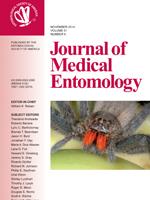In Chile, all necrotic arachnidism is attributed to the Chilean recluse spider, Loxosceles laeta Nicolet, a species that shares the microenvironmental habitats with the spitting spider Scytodes globula Nicolet. The latter species has been proposed as a potential predator of L. laeta. For this research, we studied the interaction between both species during individual encounters to assess the possibility of population regulation of L. laeta cohorts exposed to this potential predator. We found that in most encounters S. globula prevailed. Also, S. globula preys on spiderlings of L. laeta, with a population effect on cohorts of this species. These findings suggest that S. globula may be influencing L. laeta populations in central Chile. The population regulation of L. laeta by predation would be important because this species, in the absence of predators, has a high reproductive rate, and it can maintain populations of large size. However according to our results, although S. globula may aid in the reduction of both spiderling and adult L. laeta populations, and perhaps other Loxosceles species, it is insufficient for biological control of Loxosceles species. Its presence together with other control measures such as hygiene of the rooms can help to decrease loxoscelism incidence.
How to translate text using browser tools
1 March 2015
Interactions Between the Chilean Recluse Spider (Araneae: Sicariidae) and an Araneophagic Spitting Spider (Araneae: Scytodidae)
Mauricio Canals,
Nicolás Arriagada,
Rigoberto Solís
ACCESS THE FULL ARTICLE
It is not available for individual sale.
This article is only available to subscribers.
It is not available for individual sale.
It is not available for individual sale.

Journal of Medical Entomology
Vol. 52 • No. 2
March 2015
Vol. 52 • No. 2
March 2015
Loxosceles laeta
loxoscelism
Scytodes globula
spider predation




